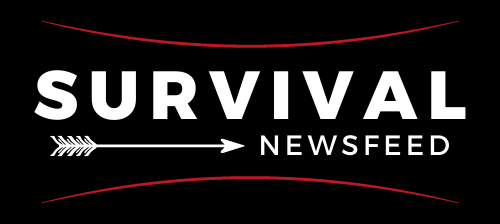In a world filled with uncertainties, the idea of self-reliance and individual preparedness often takes center stage in the prepping community. While personal preparedness is undoubtedly crucial, it’s equally important to recognize that strength lies in numbers.
Which honestly, (my two cents) is something drastically missing in today’s culture. Most people don’t even talk to their neighbors anymore.
Building a stronger neighborhood network can be the key to not only enhancing your own prepping efforts but also ensuring the well-being of your entire community in times of crisis. In this article, we will delve into the concept of community prepping and discuss how to foster a stronger neighborhood network for collective preparedness.
But this skill can be the most difficult because it involves other people.
The Power of Community Prepping:
Community prepping goes beyond stockpiling supplies and honing survival skills as an individual or family. It involves collaborating with your neighbors, sharing knowledge and resources, and working together to address common challenges. Here’s why it’s essential:
- Resource Sharing: In a disaster scenario, resources like food, water, and medical supplies may become scarce. A well-connected neighborhood network can pool its resources to ensure everyone’s basic needs are met.
- Skills and Expertise: Each person brings unique skills to the table. Whether it’s medical expertise, engineering knowledge, or gardening skills, a diverse community can leverage these talents for mutual benefit.
- Security: A united community can provide greater security. By looking out for each other and implementing neighborhood watch programs, you can reduce the risk of theft and vandalism during emergencies.
- Emotional Support: Crisis situations can be emotionally taxing. Knowing that you have a supportive community to rely on can alleviate stress and anxiety.
- Information Sharing: Timely information is critical during a disaster. A network of informed neighbors can quickly disseminate vital updates and warnings.
Steps to Building a Stronger Neighborhood Network:
- Get to Know Your Neighbors: Start by introducing yourself to your neighbors. Host a neighborhood gathering or participate in local events to establish connections.
- Identify Skills and Resources: Create a list of the skills, resources, and expertise that each neighbor possesses. This will help you understand your community’s strengths.
- Establish Communication Channels: Set up a reliable communication system within the neighborhood. This can be a phone tree, a neighborhood email list, or a social media group. Ensure everyone is informed about these channels.
- Emergency Planning: Collaboratively develop an emergency plan that includes evacuation routes, meeting points, and a list of essential supplies to share.
- Training and Workshops: Organize training sessions and workshops to share knowledge. Topics can include first aid, basic survival skills, and gardening techniques.
- Community Projects: Undertake community projects that promote self-sufficiency. Start a community garden, install rainwater harvesting systems, or establish a tool-sharing program.
- Regular Drills: Conduct emergency drills to practice your community’s response to various scenarios. This will help identify weaknesses and improve preparedness.
- Neighborhood Watch: Establish a neighborhood watch program to enhance security. Encourage residents to report suspicious activities and look out for one another.
- Emergency Kits and Supplies: Encourage neighbors to maintain their own emergency kits and supplies. Provide guidance on what to include and periodically check that everyone’s kits are up to date.
- Information Sharing: Keep each other informed about local news, weather updates, and emergency alerts. Share reliable sources of information and ensure everyone knows how to access them.
Overcoming Challenges:
While building a stronger neighborhood network is essential, it can also come with challenges. Here are some common obstacles and ways to overcome them:
- Lack of Interest: Not everyone may be initially interested in community prepping. Start small, and as others see the benefits, they may become more involved.
- Diversity of Opinions: People have different beliefs and values. Focus on common goals and shared interests while respecting individual differences.
- Time Constraints: Some neighbors may have busy schedules. Be flexible and accommodating in your approach to involving them.
- Trust Building: Building trust takes time. Consistency, transparency, and open communication are key to gaining your neighbors’ trust.
- Resource Allocation: Decide how resources will be shared and distributed. Fair and equitable distribution is essential to avoid conflicts.
A quick personal story:
One winter, we got walloped with snow in our area. It just…kept…snowing. Not in inches, but we kept getting a foot of snow every few days. I was a lot younger than I am now, and we didn’t exactly have the funds for a snow blower, so I would head out with the trusty shovel and heave hoe. Another problem was I lived on a turn that was on a downslope, and the plow wouldn’t get to close for fear of crashing into my vehicles (lucky me, extra shoveling).
Then, a glorious day came. My neighbor, who I didn’t know well, but was friendly with knocked on my door with a key in her hand.
“Here’s the keys to a brand new snowblower; it’s in my shed,” she said. “You may use it as much as you like as long as you make sure we can both get in and out.”
I couldn’t stop smiling, finally, relief. From that day on, I didn’t dread snowstorms.
But that started something. As the season went on, the street started working together, and it turned into something neat. As a matter of fact, a few years later, when we moved out, my neighbor was sad she lost her snow plow, lol!
Conclusion:
Community prepping is not just about survival; it’s about thriving together in the face of adversity. Building a stronger neighborhood network can significantly enhance your preparedness efforts and create a safer, more resilient community. it could start as simple as asking your neighbor to keep an eye on your home while you are away and exchanging numbers. By working together, sharing resources, and fostering a sense of unity, you can ensure that you and your neighbors are better equipped to handle whatever challenges come your way. Remember, in times of crisis, your community can be your greatest asset.


